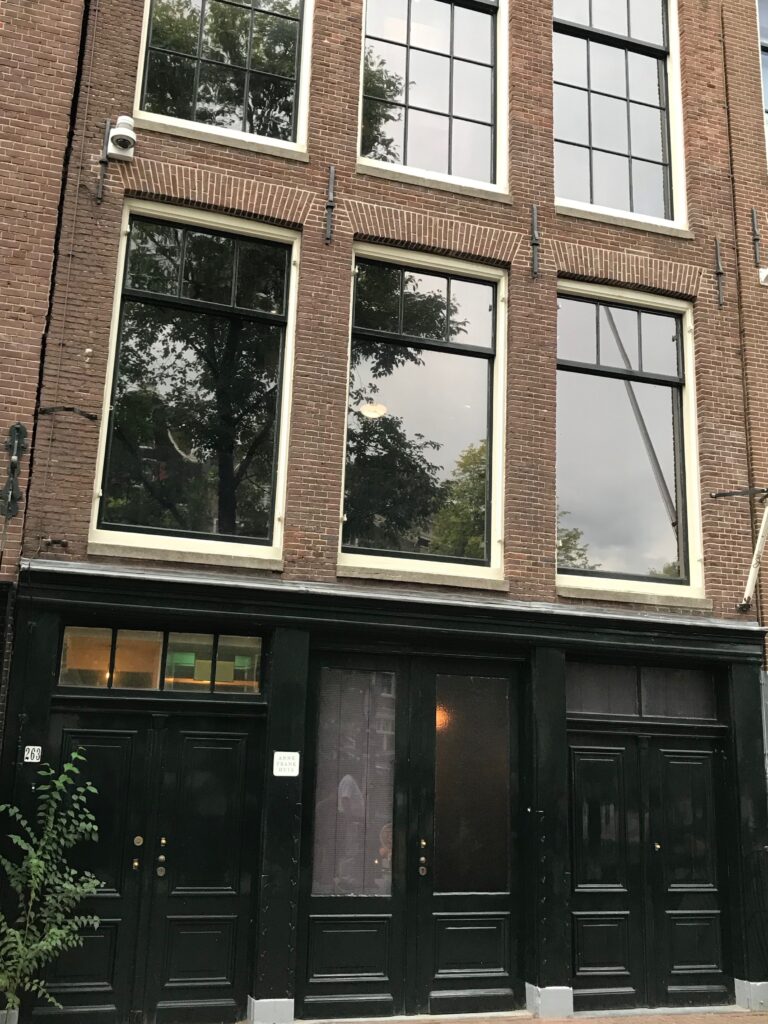Anne Frank House

Photographs aren’t allowed inside the Anne Frank House, so I took notes. So many heartbreaking details: the movie star photos Anne tacked to the wall, including one of American actor Ray Milland. The growth chart in faint pencil, similar to the one on the inside of our pantry door back home. Anne was only 13 when her family went into hiding in the “secret annex” of a house near our hotel in Amsterdam.
And then there were the words themselves, Anne’s words. The tour focuses on them, as it should. It was through words that Anne became an icon of the Holocaust, the single individual we can mourn when the sheer number of victims — six million — overwhelms us. As someone who’s kept a journal since high school, I got goosebumps when I saw the diary with its red plaid pages.
“Lieve [Dear] Kitty,” Anne began every entry. Her penmanship was fluid and even, and her margins were small. She used every inch of paper, a girl after my own heart! On one of her journal pages, she wrote these words:
“I want to be useful or bring enjoyment to all people, even those I’ve never met. I want to go on living even after my death! And that’s why I’m so grateful to God for having given me this gift, which I can use to develop myself and to express all that’s inside me! When I write I can shake off all my cares. My sorrow disappears, my spirits are revived! But, and that’s a big question, will I ever be able to write something great, will I ever become a journalist or a writer?”
She did become a writer, of course, with a fame that far exceeds anything she might have dreamed of. But what a price she had to pay.
(An exterior shot of Anne Frank’s house, as noted on the small plaque to the right of the door.)